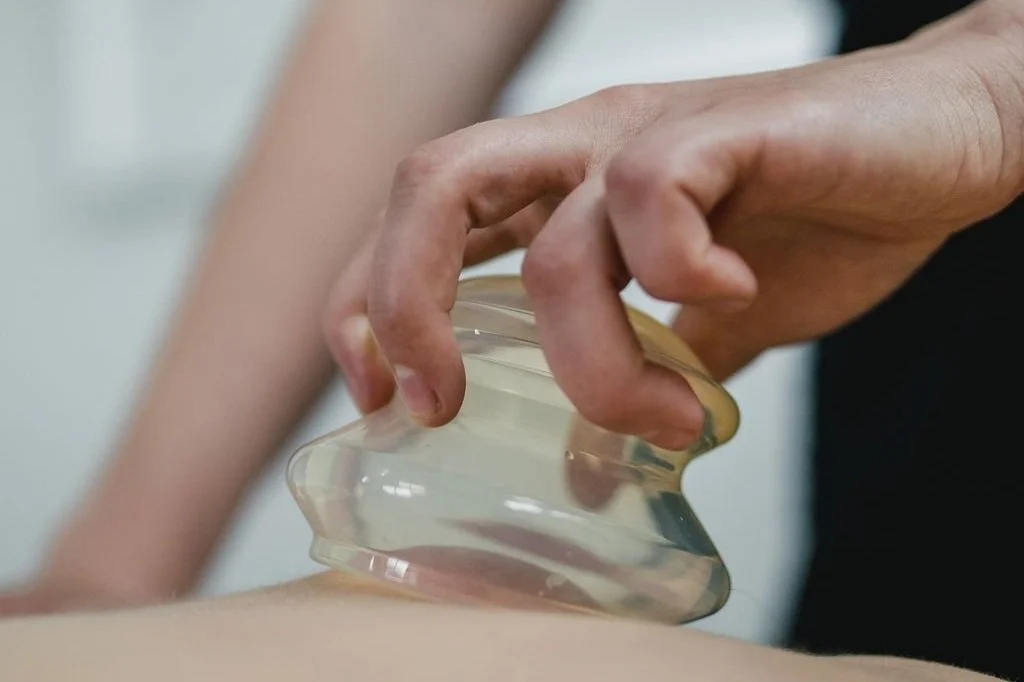Unlocking the Benefits of Cupping Therapy: A Clinical Overview
What is Cupping Therapy?
Cupping therapy is an ancient soft tissue technique that has stood the test of time as an effective method to treat musculoskeletal pain in areas such as the back, neck, and extremities. By employing suction and decompression on the tissue, cupping enhances blood flow, promotes healing, and provides pain relief. But what exactly is cupping, and how can it benefit your health journey?
How cupping works…
Cupping therapy involves placing cups made of glass, plastic, or silicone on the skin to create a suction effect. This action increases blood flow to the treated area, replenishing it with oxygen-rich blood and stimulating healing at a cellular level. The suction also opens tiny blood vessels (capillaries) under the skin, encouraging the body’s natural repair processes.
Key Benefits of Cupping:
Pain Relief and Muscle Relaxation
One of the most renowned benefits of cupping is its ability to reduce pain and tension. By increasing blood flow, the cups alleviate soreness, stiffness, and discomfort. The gentle stretching and pulling of the tissues help relax tight muscles, providing immediate relief and promoting overall relaxation.
Improved Circulation
Cupping enhances circulation by drawing blood to the surface of the skin. This increased blood flow helps remove metabolic waste and delivers essential nutrients and oxygen to the tissues. Enhanced circulation can also reduce inflammation and support overall tissue health.
Enhanced Athletic Performance and Recovery
For athletes and active individuals, cupping offers a natural way to optimize performance and speed up recovery. By improving blood flow to muscles and joints, it enhances flexibility and range of motion. Additionally, the technique reduces inflammation and supports tissue repair, making it an ideal tool for staying at the top of your game.
Common Cupping Techniques:
Cupping therapy is versatile, and practitioners may use different techniques depending on your needs:
Static Cupping
The cups are placed on the targeted area and left in place for a set period. This approach focuses on localized treatment and is ideal for relieving specific areas of tension.
Static with Movement
Cups are applied to the area while the patient actively performs movements that are typically painful or restricted. This method helps address functional limitations and enhances mobility.
Dynamic Cupping
Also known as gliding or sliding cupping, this technique involves moving the cups across the skin. This approach increases muscle and tissue separation, providing a deeper therapeutic effect..
What to Expect During and After Cupping:
Cupping is generally safe and well-tolerated. However, a common after-effect is redness, skin discoloration, or mild bruising caused by the suction’s impact on blood flow. These marks are harmless and typically fade within a few hours to a few days.
Understanding these effects and discussing your goals with your provider will help ensure a positive experience.
Cupping therapy offers a wealth of benefits for those seeking a natural and effective approach to health and wellness. From relieving pain and relaxing muscles to improving circulation and supporting athletic performance, this ancient practice provides a powerful tool for enhancing your quality of life. Whether you’re addressing specific conditions or looking to elevate your overall well-being, cupping can support your health journey in a gentle yet profound way.
Ready to experience the benefits of cupping therapy for yourself? BOOK HERE












